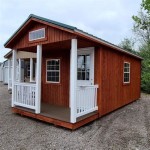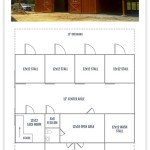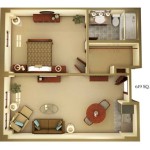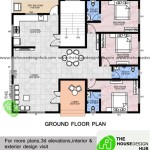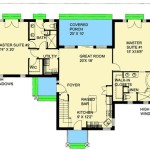How To Design a Floor Plan
A floor plan is a scaled diagram that represents the layout of a building or space, illustrating the arrangement of rooms, walls, fixtures, and other architectural features. Designing a floor plan is crucial for effective space utilization, efficient functionality, and aesthetic appeal. This process involves careful consideration of various factors, from the intended purpose of the space to the needs of its occupants.
1. Define the Purpose and Scope
The initial step in designing a floor plan is to clearly define its purpose and scope. Determine what type of space is being planned, whether it's a residential home, commercial building, or an entire neighborhood. Identify the intended use for each area, such as living spaces, bedrooms, bathrooms, kitchens, offices, or retail areas. Define the overall size and dimensions of the space, considering available land or building footprint. Establishing this framework provides a foundation for the subsequent design decisions.
2. Gather Information and Requirements
Once the purpose and scope are defined, gather relevant information and requirements for the floor plan. Conduct site surveys to determine existing features, topography, and potential constraints. Research local building codes and regulations to ensure compliance. Consult with relevant stakeholders, such as homeowners, clients, or tenants, to understand their specific needs, preferences, and accessibility requirements. This information will guide the layout and design choices, ensuring the floor plan meets both functional and aesthetic expectations.
3. Sketch and Experiment with Layouts
Begin by sketching preliminary layouts on paper or using specialized software tools. Experiment with different room arrangements, wall configurations, and traffic patterns to find optimal solutions. Consider factors such as natural light, ventilation, and views. Employ principles of spatial organization, such as circulation, flow, and hierarchy, to create a harmonious and functional space. Use furniture placement and other design elements to create distinct areas within the floor plan, while maintaining a sense of unity and flow.
4. Refine and Iterate the Design
Based on the initial sketches and feedback, refine and iterate the design. Consider the size and placement of doors, windows, and other openings to maximize natural light and ventilation. Optimize the configuration of walls and partitions for structural stability and functionality. Incorporate details such as built-in cabinetry, appliances, and fixtures to create a cohesive and functional space. Refine the layout based on the needs and preferences of the occupants, ensuring the design is both practical and aesthetically pleasing.
5. Incorporate Building Codes and Regulations
It is crucial to incorporate relevant building codes and regulations throughout the design process. Ensure that the proposed floor plan complies with fire safety regulations, accessibility standards, and other relevant regulations regarding structural integrity, electrical systems, and plumbing. Consulting with architects or engineers can provide valuable insights and ensure that the design adheres to all applicable standards. By incorporating these legal and regulatory requirements, the final floor plan will be safe, functional, and legally compliant.
6. Create Scaled Drawings and Specifications
Once the final floor plan is finalized, create accurate scaled drawings and specifications. Utilize CAD software or other drafting tools to produce professional-quality drawings that clearly depict the layout, dimensions, and details of the space. Include specifications for materials, finishes, and fixtures. These detailed drawings and specifications will serve as the blueprint for construction and ensure that the final building or space adheres to the intended design.
7. Review and Finalize the Floor Plan
Before finalizing the floor plan, review it meticulously for accuracy, completeness, and functionality. Consider the overall flow of the space, the placement of fixtures and appliances, and the functionality of different areas. Seek feedback from stakeholders, including occupants, architects, and builders, to ensure that the floor plan meets all requirements and expectations. Address any necessary revisions or adjustments before finalizing the design. This thorough review process helps prevent errors and ensures a successful and functional space.

House Plans How To Design Your Home Plan

Floor Plans Types Symbols Examples

Floor Plan Creator And Designer Free Easy App

Floor Plan Creator And Designer Free Easy App

Floor Plans Types Symbols Examples

Floor Plans Learn How To Design And Plan

Floor Plans Types Symbols Examples

House Plans How To Design Your Home Plan

Floor Plans How To Design The Perfect Layout Cherished Bliss

Floor Plan Maker


